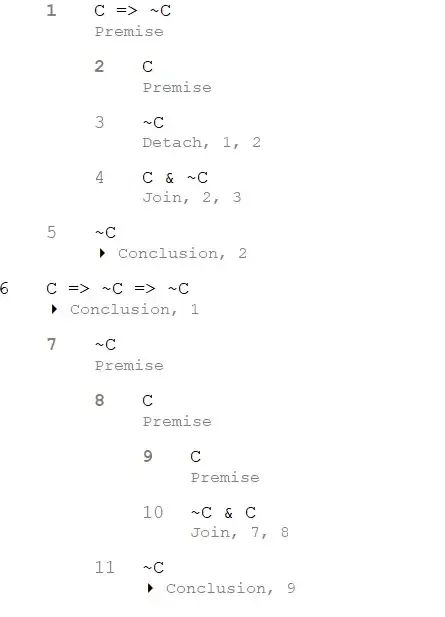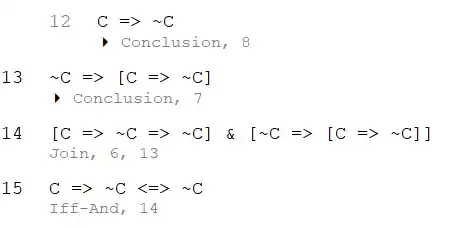The conditional operator $\Rightarrow$ can be tricky to motivate in the cases where it is True. An approach taken by Elliott Mendelson in Number Systems and the Foundations of Analysis is to examine the expression $(C\land D)\Rightarrow D$. My understanding is as follows: Because English sentences that can be paraphrased with this schema are regarded as true by virtue of their structure, we axiomatically define any interpretation of the sentence letters in this schema to evaluate to a True truth value. For example, ``If I like ice cream and Au is the chemical abbreviation for gold, then I like cream'' is obviously a true sentence by it's structure, even if I hate ice cream. In particular, when $C$ is false and $D$ is true, we get $F\Rightarrow T$ evaluates to $T$.
The above makes sense to me, but then if I again try to use English to motivate the truth table of the conditional operator, I can run into issues. In particular, the following English structure sounds clearly false, irrespective of whether I like ice cream or not: ``If I like ice cream, then I don't like ice cream.'' Written as a schema, I would say that $C\Rightarrow\lnot C$ must always be false. But if I don't like ice cream, this would lead me to conclude that $F\Rightarrow T$ should evaluate to F, in contradiction with the previous conclusion.
In both instances, I think the English reasoning used to motivate how the truth table should look are equally sound. Yet they lead to contradicting results. What am I getting wrong here?
EDIT: After reading @ryang comments, my best attempt to explain what is going is as follows:
So we appeal to the notion that, when used in argumentation, the argument "if $C\land D$ then $D$ is regarded as valid, i.e. true all the time. This is by virtue of the structure of the statement, and we haven't stopped to consider at this point what the values of C and D are. Because the argument is valid, we can then go and axiomatically state that the conditional $C\land D\Rightarrow D$ should also be valid as well, i.e. true all the time. Then hashing out the special cases gives us 3 lines of the truth table.
Now if we rewind to the beginning and undo all of that, we could try and state that the argument "if C then not C" is clearly an invalid argument. However, we can't then continue the parallel with the other approach and claim that the conditional $C\Rightarrow \lnot C$ is also unsatisfiable. If we could, we would have conflicting truth tables from the two different approaches. But we can't, for some reason, and I'm going to try and give that reason.
A valid argument is true all the time, and it is then necessary that we assert that the truth-functional schema that represents it should also be truth-functionally valid. This is because our truth-functional calculus would be useless if it told us that true arguments had false truth values. On the other hand, an invalid argument, i.e. one that is false all the time, CAN be represented by a truth-functional schema that is true, because an argument is a different object than a schema; in particular, true statements can be thrown together in a way that doesn't constitute a true argument.



But I suppose it depends on what you view as the most important consideration when axiomatically defining the table. If it should represent English speech accurately, then I think sentences like $C\land D\Rightarrow D$, when uttered, sound just as True as sentences like $C\Rightarrow\lnot C$ sound False.
– MaanDoabeDa Mar 05 '24 at 01:38